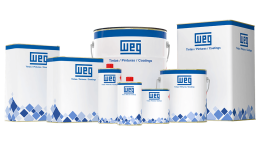What is PU Diluent?
PU diluent, short for polyurethane diluent, is a type of solvent used to reduce the viscosity of polyurethane-based formulations, making them easier to apply. This product is integral in industries that utilize polyurethane (PU) coatings, adhesives, and paints because it enhances the flow and application properties without compromising the end product’s quality. By adjusting the thickness and consistency, PU diluents allow for smooth application and even film formation, which is especially useful in industries requiring detailed finishes, like automotive, furniture, and industrial manufacturing.
PU diluents are typically formulated to balance performance with environmental and health standards. They are available in both reactive and non-reactive forms, catering to different applications and environmental regulations. Some are designed to work seamlessly with polyurethane systems to minimize emissions of volatile organic compounds (VOCs), making them ideal for companies focusing on eco-friendly and sustainable production.

Types of PU Diluent
PU diluents come in various types, primarily divided into reactive and non-reactive diluents, each with distinct characteristics suited to specific applications:
- Reactive PU Diluents
Reactive diluents participate in the chemical curing process, becoming a part of the final film or coating. They are designed to cross-link with the polymer in the coating formulation, which adds durability and adhesion strength to the final product. Common in high-performance applications, reactive PU diluents are often used in scenarios where lasting resistance to wear, chemicals, or harsh environmental conditions is essential. - Non-Reactive PU Diluents
Non-reactive diluents, in contrast, do not chemically react with the other components in the polyurethane system. They help thin the formulation without contributing to the curing process. These diluents are usually designed for temporary adjustments, evaporating or dissipating during the curing stage. Non-reactive diluents are typically selected when ease of application and quick evaporation are more critical than durability. - Eco-Friendly or Low-VOC PU Diluents
In response to environmental regulations, manufacturers now offer low-VOC (Volatile Organic Compound) PU diluents. These formulations are engineered to reduce the release of harmful emissions, making them suitable for environmentally conscious applications. While they might come with certain limitations regarding drying time or adhesion, they are increasingly popular in regions with strict environmental regulations. - Eco-Friendly or Low-VOC PU Diluents
In response to environmental regulations, manufacturers now offer low-VOC (Volatile Organic Compound) PU diluents. These formulations are engineered to reduce the release of harmful emissions, making them suitable for environmentally conscious applications. While they might come with certain limitations regarding drying time or adhesion, they are increasingly popular in regions with strict environmental regulations.

FAQs About PU Diluents
1. What is the main purpose of using PU diluents?
PU diluents are used to reduce the viscosity of polyurethane formulations, making them easier to apply and enhancing their surface coverage. They can also contribute to the durability and appearance of the finished product.
2. Are PU diluents safe for the environment?
Certain PU diluents, especially low-VOC options, are designed to be more environmentally friendly by minimizing the release of volatile organic compounds. These eco-friendly options are increasingly popular in industries aiming to reduce their environmental impact.
3. How do I choose the right type of PU diluent for my application?
The choice depends on factors such as the application process, desired drying time, and environmental regulations. For durable, long-lasting coatings, reactive diluents are often preferred. For quick application and evaporation, non-reactive diluents may be more suitable.
4. Can PU diluents affect the quality of the polyurethane coating?
Yes, the type and quality of PU diluent used can significantly impact the final product’s quality. Correctly chosen diluents can enhance the durability, adhesion, and finish of polyurethane coatings, while inappropriate diluents may lead to issues like poor adhesion or uneven drying.
5. Are there alternatives to PU diluents?
Other types of solvents and thinners are available, but they may not offer the same performance characteristics specific to polyurethane systems. PU diluents are formulated to work best with polyurethane, so alternatives may compromise quality or compatibility.
PU diluents play a crucial role in the formulation and application of polyurethane products, enhancing performance by adjusting viscosity, improving surface coverage, and contributing to the finish quality. With a range of types available, from reactive and non-reactive to eco-friendly options, industries can select the right PU diluent to meet their specific needs, whether for durability, environmental compliance, or ease of application. As environmental considerations and performance demands evolve, PU diluents continue to adapt, making them an indispensable component in modern polyurethane applications. Understanding the properties and benefits of different PU diluents ensures that industries can maximize the effectiveness and sustainability of their polyurethane products.

Automotive Refinishing
Increased productivity and reduced manufacturing costs, continuous adoption of newer technologies.

Powder Coatings
Ultimate finish, is a dry finishing process that has become extremely popular, the versatile properties of powder coating make it ideal for a variety of needs.

Industrial / Anticorrosive
The industrial line offers many solutions for protecting materials and surfaces from harsh environment conditions & UV Damage.
Related Posts
July 9, 2025